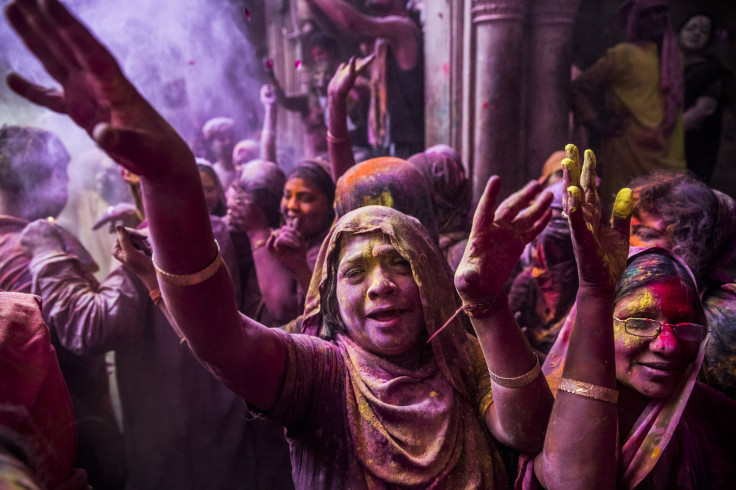Holi 2017: Date, Facts, History, How To Celebrate Hindu Festival Of Colors

If you happen to be in a city with a large Indian population on Monday, don’t be too alarmed if you see a mass of people coating each other with colored powder and shooting water guns. You will have just walked into a celebration of Holi, one of the largest and certainly most colorful events in the Hindu calendar. It is after all, the Festival of Colors.
When is it Celebrated?
Holi always occurs on the last full moon of the Hindu lunar month of Phalguna, which on the Gregorian calendar falls between late February and late March. This year, it begins Sunday evening, with celebrations continuing into Monday.
Read: Religious Holidays 2017: Complete Calendar For Christian, Jewish, Islamic, Hindu, Buddhist Religions
It coincides with the shift in India from winter to the summer or pre-monsoon season. Although there is no official spring season, Holi celebrates the arrival and vibrancy of spring as well the triumph of good over evil.
Why is it Celebrated?
While it may be attached to spring time, there are multiple legends connected to the origins of the festival. But the main legend surrounds Prahalad, the son of King Hiranyakashyap and a loyal devotee of the god Vishnu, and Holika.
Upon telling his father that it was not he but Vishnu who was the greatest, Prahalad was sentenced to death by the king. After the first few attempts on his life failed, Prahalad’s sister, Holika, who had been made impervious to fire by the gods, was given the task of burning him to death. But as Holika sat in the flames with her brother on his lap it was she and not Prahalad who burned as the gods stepped in to save the boy.
How is it Celebrated?
The celebrations begin the night before Holi with a bonfire in which evil is symbolically burned. The main event will take place Monday with the festival of colors as millions pour onto the streets to throw colored powder and water at each other. It is this that creates the spectacle with which Holi is most richly associated.
While primarily observed in India and Nepal, celebrations have spread all over the world, even among some non-Hindus.
© Copyright IBTimes 2024. All rights reserved.





















